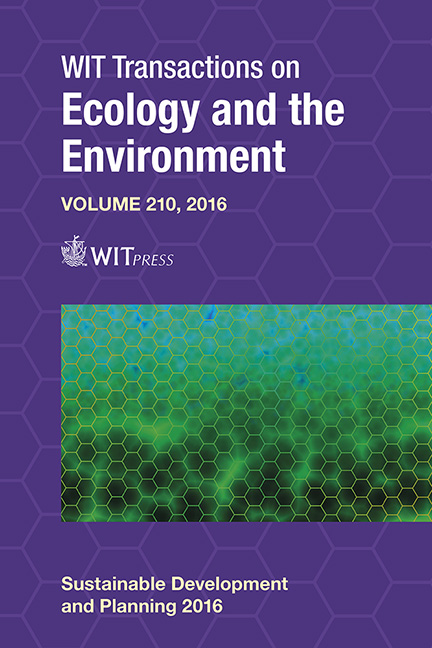Statistical Approach To Identify Naples City’s Real Driving Cycle Referring To The Worldwide Harmonized Light Duty Test Cycle (WLTC) Framework
Price
Free (open access)
Transaction
Volume
210
Pages
12
Page Range
555 - 566
Published
2017
Size
776 kb
Paper DOI
10.2495/SDP160461
Copyright
WIT Press
Author(s)
L. Della Ragione, G. Meccariello
Abstract
In the context of sustainability, which requires an interdisciplinary approach, evaluation of car emissions and strategies for their reductions plays a fundamental role. Any sustainable private transport solutions could be proposed solely from the integration of many disciplines, architects, environmentalists, policy makers, and so it may be addressed with different approaches. These solutions would be applied at different geographical levels, i.e. national, regional or urban scale. In addition, it is fundamental to keep in mind that nowadays, the new Worldwide harmonized Light vehicles Test Procedures (WLTP) and Worldwide harmonized Light duty Test Cycle (WLTC) cycle will reproduce a situation closer to the reality with respect to the Extra Urban Driving Cycle (EUDC)/New European Driving Cycle (NEDC) driving cycle. During the research activities of the DRIVE IN2 project (DRIVEr monitoring: technologies, methodologies, and IN-vehicle INnovative systems for safe and eco-compatible driving), that involved universities, public research institutions and automobile companies, an experimental campaign was realized in the roads of Naples city. So, instrumented vehicles for the simultaneous acquisition of kinematic variables, localization and emissions data have been used. Until now, data are analyzed for each specific vehicle with the aim of investigating a correlation between vehicle kinematics and relative emissions of regulated pollutants. Here the attention will be focused on the global results strictly from a kinematic point of view. Therefore, we will present driving cycles representative of the real behaviour of cars on two typical city paths, one very flat and the other run over hill. Real driving emissions were acquired during the experimental campaign with Portable Emissions Measurement System (PEMS) and precise geolocalization data were registered by Global Positioning System (GPS). The collected kinematic database was analyzed by multivariate statistical analysis to obtain a cluster of speed parts, each of them representative of a driving mode, start&stop, cruise, acceleration, deceleration and the initial phase of a trip. Finally, applying some statistical criteria, and going in the same direction of a WLTC approach, a driving cycle composed of a succession of speed parts was built.
Keywords
statistical analysis, driving cycle, WLTC





